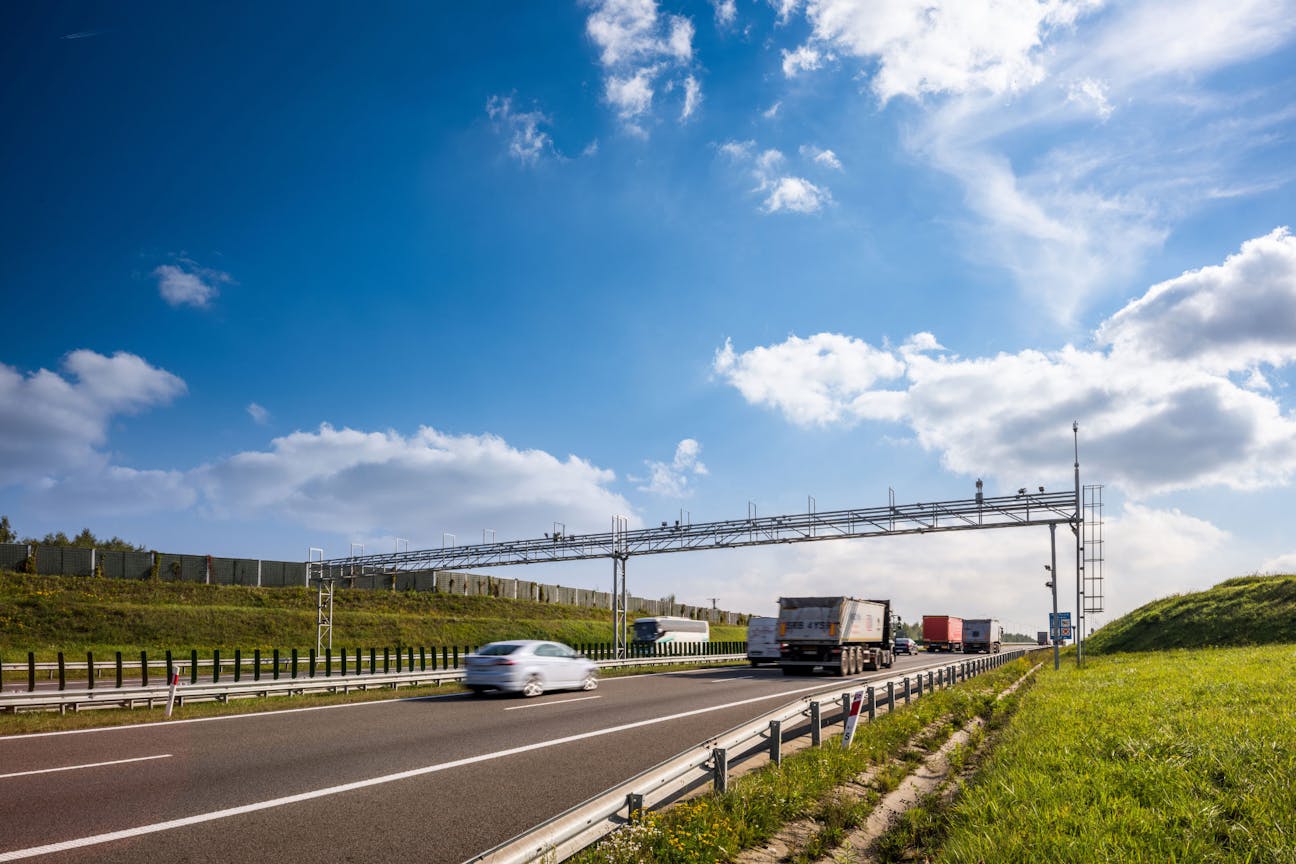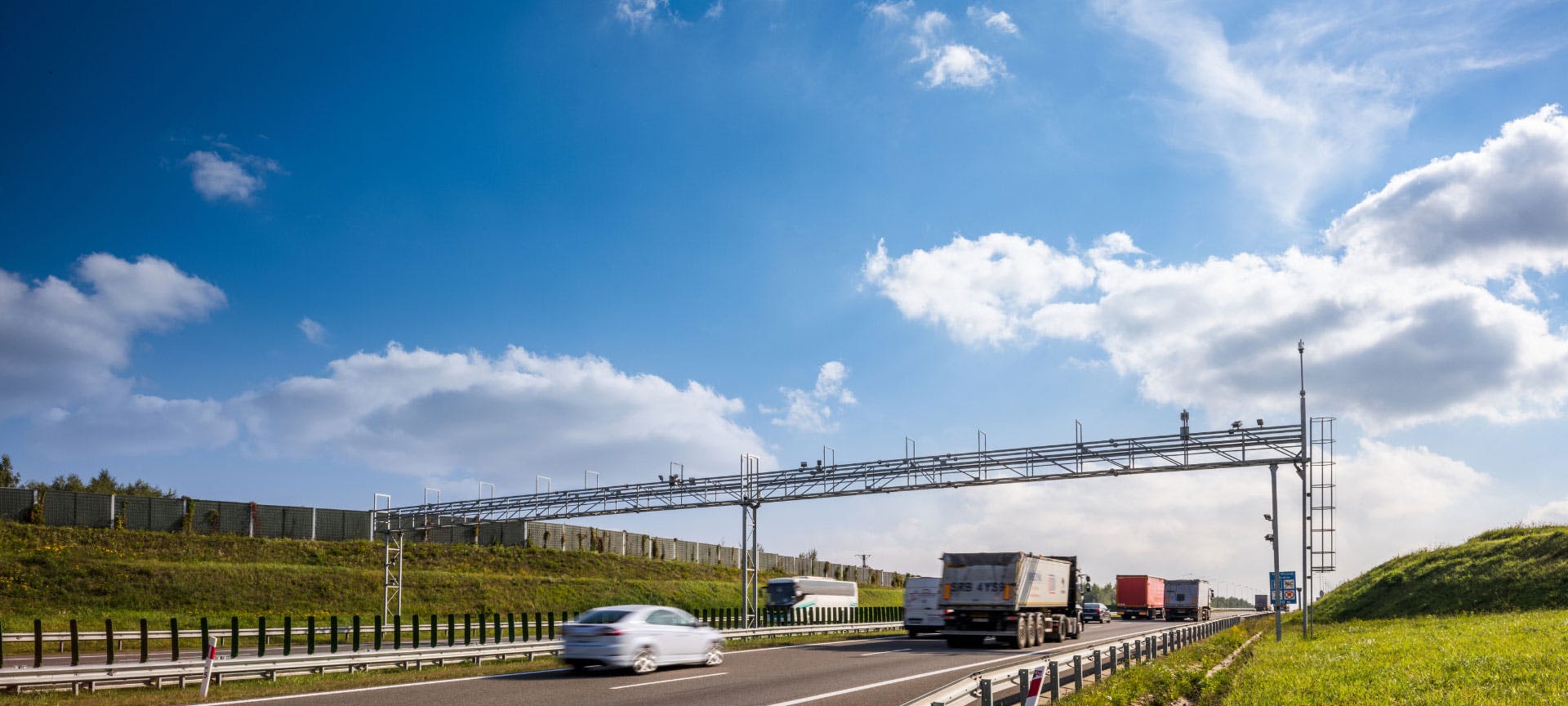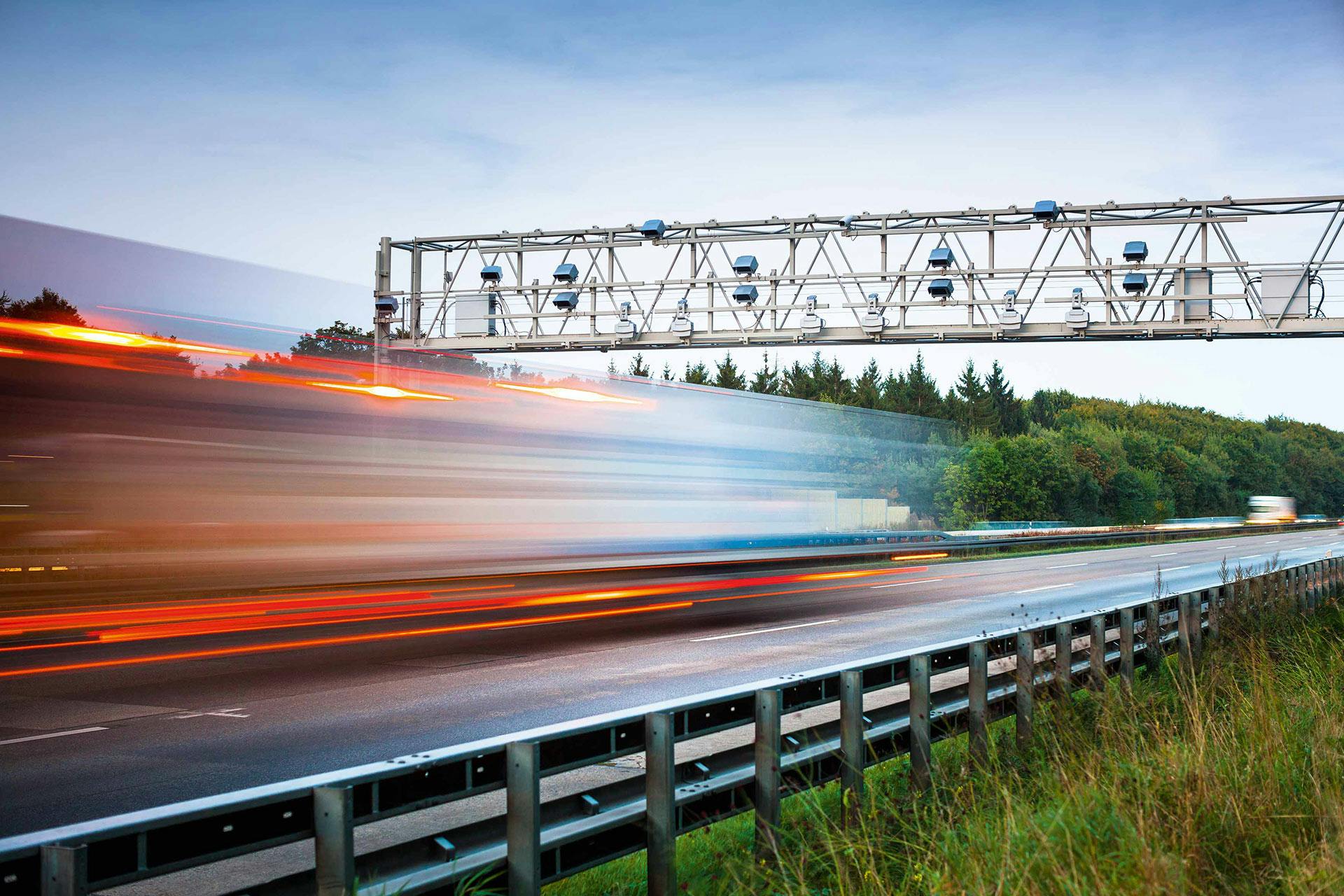

Celebrating 40 years of globally leading technology The Way to Green Toll Enforcement
Sustainability at all levels as an investment in the future
Can tolling solutions pay off for the future of transportation? As cities grow and urbanization progresses, the impact of traffic is constantly increasing. Urban and suburban transportation planning needs solutions for sustainable mobility strategies and technologies that integrate with them. Our engineers constantly work on the development of such systems.
Many cities, especially in Europe, are responding to this increasing traffic with UVARs (urban vehicle access regulations) such as congestion charging zones and LEZs (low emission zones). Alongside these measures in cities, tolling on highways is being used since decades to collect money for infrastructure funding but also as an effective method for reducing traffic and congestion. This supports the promotion of low emission vehicles by granting toll discounts to owners of modern trucks and cars having a low emission combustion engine or which are electrically powered.

Modern tolling solutions can be a decisive tool for a sustainable transport policy and for state of the art traffic management if the applied technologies are developed to such an extent that they have an ecological, economic and practical impact."
One such holistic solution is the Tollchecker 5, the latest generation of automated tolling systems from VITRONIC. It combines camera technology with advanced artificial intelligence (AI) which brings benefits on multiple levels. The system delivers a recognition rate of over 99% for human readable number plates (ANPR) and classifies up to 15 vehicle categories in standard configuration. This makes it suitable for traffic scenarios of any complexity, promotes acceptance through reliability and secures revenue, which in turn can be used to finance the further development of infrastructure.
- >99% Recognition rate for human-readable license plates
Due to the AI's analytical capabilities and the camera's detection range, the technology also requires fewer sensors and hardware, making it more cost-effective and easier to implement and maintain. Contributing to this are features such as remote monitoring and sensor configuration options and the modular design, which combined with long component life cycles helps to reduce the need for spare parts and facilitates repairs. All this ensures a faster ROI and thus makes the solution accessible to many road operators as well as to cities and municipalities.
In addition, this "reduction" and improved efficiency leads to significantly lower energy consumption, which, besides financial benefits, reduces CO2 emissions and the environmental footprint.
The evolution of tolling technology
Our current tolling solutions, such as the Tollchecker 5, are the result of step-by-step innovation - in the sense that we have always been driven by the question: How can our technologies overcome the present challenges of tolling?
In the early 2000s, the major challenge was to enable tolling in free flowing traffic, but this required multiple gantries and thus a lot of expensive hardware and large implementation efforts. Back then, VITRONIC was the first company to take a step towards reduced hardware by compromising the technology to only one gantry. However, this was only the first of many new approaches that have repeatedly produced new, advanced systems. Each one built on its predecessor, optimized them or adapted them to the new requirements.
The introduction of the Tollchecker 4 was a breakthrough, as the solution set new standards in terms of efficient and accurate tolling. It was also the basis for the development of today's Tollchecker 5, which has been used initially for implementing an electronic toll collection system in Poland.
40 years VITRONIC - experience for progress
This practical focus and more than 40 years of experience in machine vision systems also means that our experts at VITRONIC take a comprehensive look at its solutions and combines applications from different areas in order to produce the best possible result. For the toll collection system in Poland, for example, 102 patrol vehicles were equipped with enforcement beams to make tolling even more flexible.
As a full-service provider, we had the opportunity to support numerous customers in all aspects of the implementation and optimization of tolling systems. The advantage for customers was that they had a single point of contact for comprehensive services ranging from planning, software and hardware to system integration and testing, technical and commercial operations up to financing support. VITRONIC, on the other hand, gained something else through the intensive customer contact over the years:

This in-depth cooperation has provided us with profound insights into all the issues and challenges that customers face and rooted our developments in experience, expertise and real needs."
That allows us to provide technologies for sustainable, efficient toll enforcement and tolling solutions that are, so to speak, an investment that finances the future!



